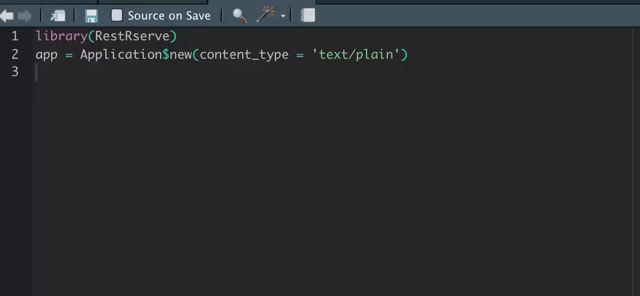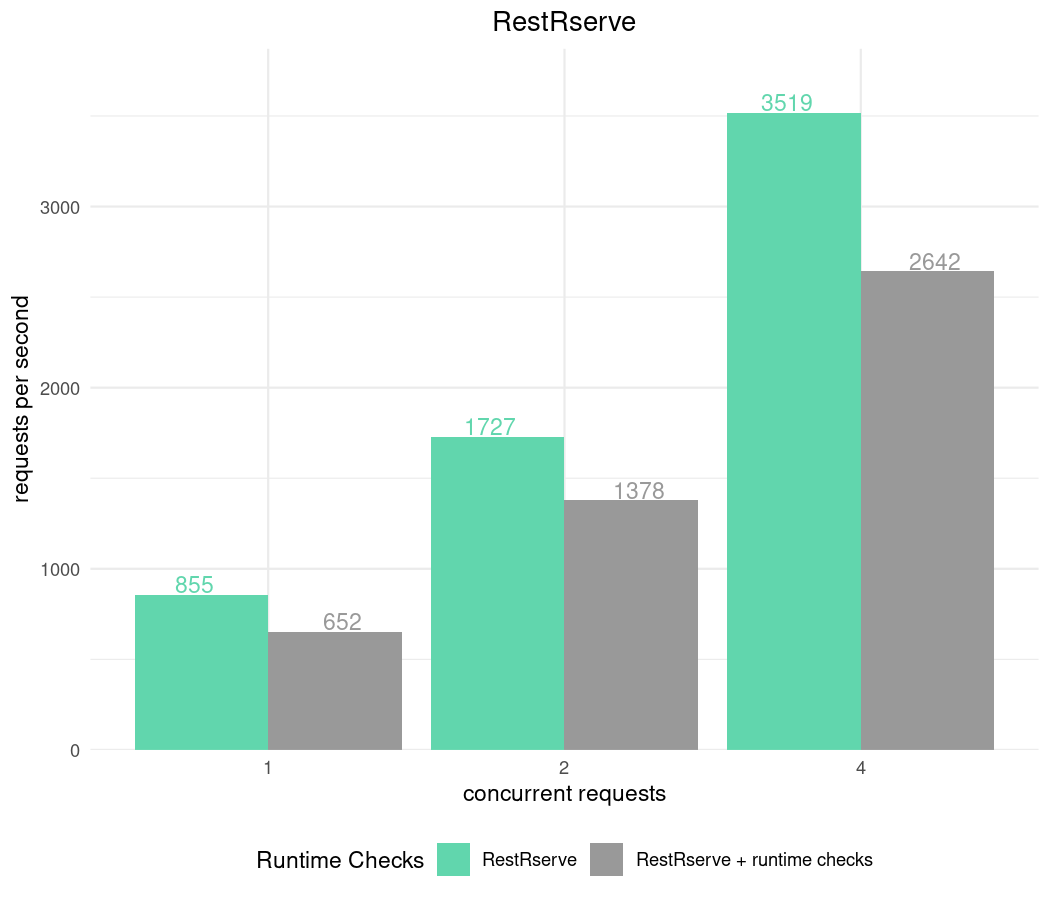RestRserve









RestRserve is an R
web API framework for building high-performance AND
robust microservices and app backends. On UNIX-like
systems and Rserve backend
RestRserve handles requests in parallel: each request in a separate
fork. All credits for go to Simon
Urbanek.
Quick start
Creating application is as simple as:
library(RestRserve)
app = Application$new()
app$add_get(
path = "/health",
FUN = function(.req, .res) {
.res$set_body("OK")
})
app$add_post(
path = "/addone",
FUN = function(.req, .res) {
result = list(x = .req$body$x + 1L)
.res$set_content_type("application/json")
.res$set_body(result)
})
backend = BackendRserve$new()
backend$start(app, http_port = 8080)
Test it with curl:
curl localhost:8080/health
# OK
curl -H "Content-Type: application/json" -d '{"x":10}' localhost:8080/addone
# {"x":11}
Autocomplete
Using convenient .req, .res names for
handler arguments allows to leverage autocomplete.

Learn RestRserve
Features
- Stable, easy to install, few dependencies
- Concise and intuitive syntax
- Well documented, comes with many examples - see inst/examples
- Fully featured http server with the support for URL encoded
and multipart forms
- Build safe and secure applications - RestRserve
supports https, provides building blocks for basic/token
authentication
- Raise meaningful http errors and allows to
interrupt request handling from any place of the user code
- Saves you from boilerplate code:
- automatically decodes request body from the common formats
- automatically encodes response body to the common formats
- automatically parses URI templates (such as
/get/{item_id})
- helps to expose OpenAPI and Swagger/Redoc/Rapidoc UI
- It is fast!

Installation
From CRAN
install.packages("RestRserve", repos = "https://cloud.r-project.org")
Docker
Debian and Alpine based images are available on docker-hub -https://hub.docker.com/r/rexyai/restrserve/
docker pull rexyai/restrserve
You can also install specific version (and we encourage to do
so):
docker pull rexyai/restrserve:1.2.0-alpine
Contributing
Guidelines for filing issues / pull requests - CONTRIBUTING.md.
Acknowledgements
- Simon Urbanek (@s-u) for awesome Rserve and all the work on R
itself and on his other packages
- Jeff Allen (@trestletech) for his
work on Swagger UI in plumber (from where we
took inspiration for our implementation)
- Brodie Gaslam (@brodieG) for help with
understanding on how to get traceback from try-catch function calls.
Also thanks Hadley Wickham
(@hadley) for
evaluate::try_capture_stack function which we use for this
purpose.
Known limitations
- RestRserve is primarily tested on UNIX systems. While it works
natively on Windows please don’t expect it to be as performant as on
UNIX-like systems. If you really want to use it on Windows - consider to
use Windows Subsystem
for Linux.
- Keep in mind that every request is handled in a separate process
(fork from a parent R session). While this feature allows to handle
requests in parallel it also restricts reuse of certain objects which
are not fork-safe (notably database connections, rJava objects,
etc)



